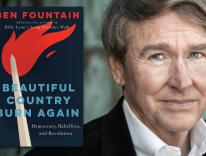I’ve written about gun violence and gun rights at length before, so this time I’ll be brief. In fact, I mostly want readers to look at a single image. Sometimes a graph is worth a thousand words.
A quick thought before I link to it. When I take up a controversial political or social topic, I try to scrutinize my own position and comprehend its basis and implications. In the “gun control” debates—I don’t like that term, but I’m not going to play the name game—the questions for my side would include: Can you show persuasively that any measure you’re proposing would have likely prevented Orlando, Newtown, Columbine and the rest, and/or would likely substantially reduce any category of U.S. gun deaths? And can you outline how much governmental intrusion into freedoms you’re willing to tolerate (for instance, via so-called “no buy” lists based on mental-illness criteria and/or affiliations or contacts with extremist groups) in order to accomplish these reductions? Where would you draw the line?
One has to note, ruefully, that such policy questions for people on my side are problems created in the first place by the glut of guns in the U.S. But that doesn’t change the fact that it’s important to fashion proposals that aren’t just feel-good measures.
For the other side, the question is simpler. The day after Orlando, the New York Times published an article comparing the incidence of U.S. gun deaths with other wealthy countries. The text of the article uses freak disasters to highlight the discrepancy. For instance, in Japan you're as likely to be killed by a gun as by lightning. In Spain it’s heat prostration. But the most striking comparison is pictorial. The graph in the article shows how wildly out of whack our gun death rate is in comparison with our peer group. It is a graphic definition of the word “outlier.”
The question for gun-rights advocates would be this: Can we agree that the enormous discrepancy between our country and the rest of the world, and the 30,000 or so gun deaths it represents, is a serious problem—or are you willing to accept it as an unfortunate but inevitable cost of mass gun ownership? If you agree that it is a problem we have to address, how do you propose to do so? And if your proposal is to add still more guns into the mix, please explain how doing so will increase safety, since both statistical analyses and common sense suggest the opposite.
Finally, as an unrelated footnote, I have to draw attention to a remark made by Donald Trump after Orlando, and quoted almost in passing in a Times editorial. Summing up the implications of the shooting, Trump called for President Obama to resign, charging—cryptically, as the Times noted—that “we’re being led by a man who either is not tough, not smart, or he’s got something else in mind.”
Did I hear that right? If so, then the Republican candidate for president just accused the sitting president—via a smarmy innuendo just vague enough to allow for deniability—of harboring sympathies for, if not colluding outright with, Islamic terrorists who commit mass murder. Such reckless, darkly conspiratorial and slanderous remarks clearly resonate with Trump’s base; how much traction they will gain with the other 80 percent of Americans remains to be seen.
Please email comments to [email protected] and join the conversation on our Facebook page.
Share
Previous Story
Letter from Rome
Next Story
In the Hands of an Angry Electorate


